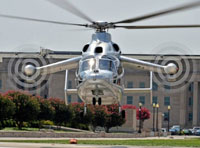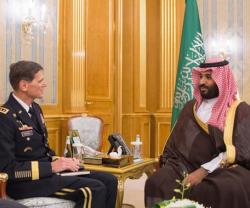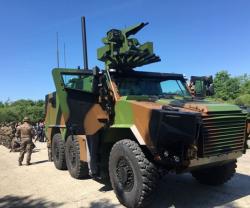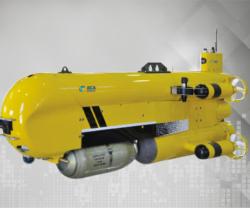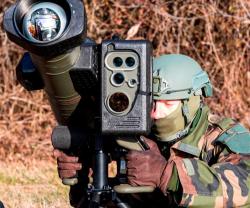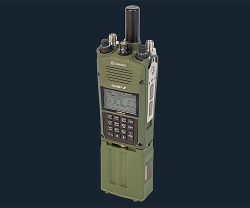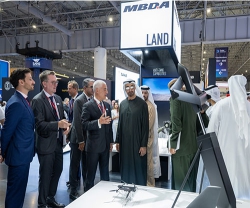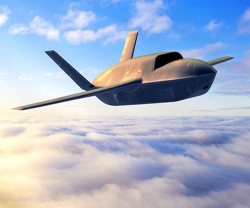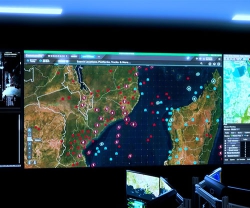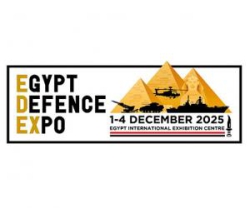Eurocopter's X3 Completes Major U.S. tour
06.08.2012 North America
The X3 returned last week to its home base at the Istres Flight Test Center in southern France, where it arrived aboard a chartered cargo jetliner that airlifted the aircraft from Virginia in the U.S.
During its U.S. tour, the X3 made appearances in 4 states from Texas to Virginia – logging more than 55 hours performed by the Eurocopter test crew, along with opportunities for 47 guest pilots to take the controls for a first-hand appreciation of this aircraft’s excellent flight qualities, maneuverability and outstanding acceleration/deceleration capabilities.
Among the X3’s flight characteristics praised by these pilots were its excellent stability and low vibration level, the impressive acceleration and deceleration, the capability to make steep descents while controlling the speed, the aircraft’s capacity to hover nose-down or nose-up, and its ability to be flown throughout the entire flight envelope with the autopilot off.
“We are highly encouraged by the overwhelmingly positive feedback from potential future U.S. civil and military users, which once again confirms the need for such a new approach that combines game-changing performance with highly cost-effective economics,” said Eurocopter President and CEO Lutz Bertling.
The U.S. visit marked the X3’s first-ever major tour, along with its initial appearance outside of Europe. Underscoring the maturity of Eurocopter’s hybrid helicopter concept, the aircraft performed its entire tour as planned, from a special kick-off event and a week of demonstrations at the Grand Prairie, Texas headquarters of Eurocopter’s American Eurocopter U.S. subsidiary to scheduled presentations at the Redstone Arsenal Army Airfield in Huntsville, Alabama; Simmons Army Airfield at Fort Bragg near Fayetteville, North Carolina; Manassas Regional Airport in Manassas, Virginia; Davison Army Airfield at Fort Belvoir, Virginia;, and the Pentagon, adjacent to Washington, D.C.
Flying presentations throughout the X3 tour were performed by Eurocopter experimental test pilot Hervé Jammayrac, accompanied by flight test engineers Daniel Semioli and Dominique Fournier, along with project and technical team members. Guest pilots provided with opportunities to fly the X3 included aviators from U.S. military services, law enforcement agencies, medical airlift service providers, offshore operators, and the aircraft services sector.
The X3’s dynamic performance results from its unique configuration, which uses a pair of turboshaft engines to power both a five-blade main rotor system and two propellers installed on short-span fixed wings. To date, the hybrid aircraft has demonstrated a maximum speed of 232 knots at 80 percent power, as well as a rate of climb of 5,500 feet per minute. It also has very low vibration levels without the need for any passive or active anti-vibration systems.
Eurocopter advanced the X3 hybrid configuration from concept to first flight in 2.5 years. After going airborne for the first time at the Istres Flight Test Center in September 2010, the aircraft’s flight envelope was quickly opened – reaching the initial speed objective of 180 kts. (333 km/hr.) in level flight only weeks later. Flights resumed in March 2011 after a planned validation of the gearboxes for operations at full power, with the X3 easily surpassing its original speed target of sustained cruise speeds of 220 kts.
Leveraging the combination of higher cruise speeds with excellent vertical takeoff and landing performance, the X3 is well-suited for such civil operations as search and rescue, coast guard, border patrol, passenger transport, off-shore airlift and inter-city shuttle services. Military applications in the U.S. include Special Forces operations, attack, assault, troop transport, combat search and rescue and medical evacuation.
The X3 is designed to be cost-effective, representing a major advantage in military and civilian acquisitions, as well as for operations - with its cruise speed being increased by 50% while life cycle costs increases will be below 20%.
During its U.S. tour, the X3 made appearances in 4 states from Texas to Virginia – logging more than 55 hours performed by the Eurocopter test crew, along with opportunities for 47 guest pilots to take the controls for a first-hand appreciation of this aircraft’s excellent flight qualities, maneuverability and outstanding acceleration/deceleration capabilities.
Among the X3’s flight characteristics praised by these pilots were its excellent stability and low vibration level, the impressive acceleration and deceleration, the capability to make steep descents while controlling the speed, the aircraft’s capacity to hover nose-down or nose-up, and its ability to be flown throughout the entire flight envelope with the autopilot off.
“We are highly encouraged by the overwhelmingly positive feedback from potential future U.S. civil and military users, which once again confirms the need for such a new approach that combines game-changing performance with highly cost-effective economics,” said Eurocopter President and CEO Lutz Bertling.
The U.S. visit marked the X3’s first-ever major tour, along with its initial appearance outside of Europe. Underscoring the maturity of Eurocopter’s hybrid helicopter concept, the aircraft performed its entire tour as planned, from a special kick-off event and a week of demonstrations at the Grand Prairie, Texas headquarters of Eurocopter’s American Eurocopter U.S. subsidiary to scheduled presentations at the Redstone Arsenal Army Airfield in Huntsville, Alabama; Simmons Army Airfield at Fort Bragg near Fayetteville, North Carolina; Manassas Regional Airport in Manassas, Virginia; Davison Army Airfield at Fort Belvoir, Virginia;, and the Pentagon, adjacent to Washington, D.C.
Flying presentations throughout the X3 tour were performed by Eurocopter experimental test pilot Hervé Jammayrac, accompanied by flight test engineers Daniel Semioli and Dominique Fournier, along with project and technical team members. Guest pilots provided with opportunities to fly the X3 included aviators from U.S. military services, law enforcement agencies, medical airlift service providers, offshore operators, and the aircraft services sector.
The X3’s dynamic performance results from its unique configuration, which uses a pair of turboshaft engines to power both a five-blade main rotor system and two propellers installed on short-span fixed wings. To date, the hybrid aircraft has demonstrated a maximum speed of 232 knots at 80 percent power, as well as a rate of climb of 5,500 feet per minute. It also has very low vibration levels without the need for any passive or active anti-vibration systems.
Eurocopter advanced the X3 hybrid configuration from concept to first flight in 2.5 years. After going airborne for the first time at the Istres Flight Test Center in September 2010, the aircraft’s flight envelope was quickly opened – reaching the initial speed objective of 180 kts. (333 km/hr.) in level flight only weeks later. Flights resumed in March 2011 after a planned validation of the gearboxes for operations at full power, with the X3 easily surpassing its original speed target of sustained cruise speeds of 220 kts.
Leveraging the combination of higher cruise speeds with excellent vertical takeoff and landing performance, the X3 is well-suited for such civil operations as search and rescue, coast guard, border patrol, passenger transport, off-shore airlift and inter-city shuttle services. Military applications in the U.S. include Special Forces operations, attack, assault, troop transport, combat search and rescue and medical evacuation.
The X3 is designed to be cost-effective, representing a major advantage in military and civilian acquisitions, as well as for operations - with its cruise speed being increased by 50% while life cycle costs increases will be below 20%.
Latest news
Latest events
Dubai Airshow
17 - 21 Nov 2025Dubai World Central (DWC) - United Arab EmiratesEgypt Defence Expo (EDEX)
01 - 04 Dec 2025Egypt International Exhibition Center New Cairo - EgyptDoha International Maritime Defence Exhibition & Conference (DIMDEX 2026)
19 - 22 Jan 2026Doha - QatarUMEX – SimTEX
20 - 22 Jan 2026ADNEC Centre Abu Dhabi, - United Arab Emirates

